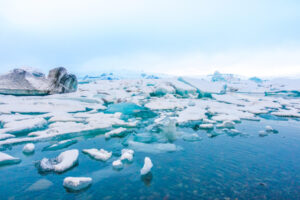Physical Address
23,24,25 & 26, 2nd Floor, Software Technology Park India, Opp: Garware Stadium,MIDC, Chikalthana, Aurangabad, Maharashtra – 431001 India
Physical Address
23,24,25 & 26, 2nd Floor, Software Technology Park India, Opp: Garware Stadium,MIDC, Chikalthana, Aurangabad, Maharashtra – 431001 India

By Aayushi Sharma
Scientists have discovered a ticking time bomb related to climate change in the isolated Arctic archipelago of Svalbard. Under the permafrost, millions of cubic meters of methane—a greenhouse gas much more powerful than carbon dioxide—are moving out, having the potential to dramatically worsen global warming.
According to a recent study conducted by Dr. Thomas Birchall of the University Centre in Svalbard, the highlands of the island are less icy and more porous than the lowland areas, which have ice-rich permafrost that acts as an effective seal.
This finding prompts worries about the potential leakage of contained methane in the event that permafrost thaws too much as a result of warming temperatures.
Based on historical data from scientific and commercial boreholes, the research suggests that these methane deposits are probably not limited to Svalbard but rather exist throughout the Arctic. “At present, the leakage from below permafrost is very low,” says Dr. Birchall, “but with glacial retreat and permafrost thawing, we may soon see this change.”
Ground that stays frozen for two years or more is known as permafrost, and it varies throughout Svalbard. The lowlands feature a thicker, ice-saturated layer with good sealing qualities, but the western parts, which are affected by warmer ocean currents, have thinner permafrost. Even in areas of continuous permafrost, certain geological characteristics might let methane leak out. Climate change is causing the active layer of permafrost to grow, raising concerns about the stability of the deeper levels and what will happen to the methane they hold. Methane leakage could quicken if the permafrost gets thinner and more broken up, which could start a feedback cycle whereby warming and permafrost thawing occur simultaneously.
This finding emphasizes the critical need for more investigation into the Arctic greenhouse gas budget and sub-permafrost methane. Understanding and reducing the risks presented by methane release is essential in the worldwide fight against climate change, as the Arctic continues to warm at an alarming rate.
References:
https://www.frontiersin.org/articles/10.3389/feart.2023.1277027/full